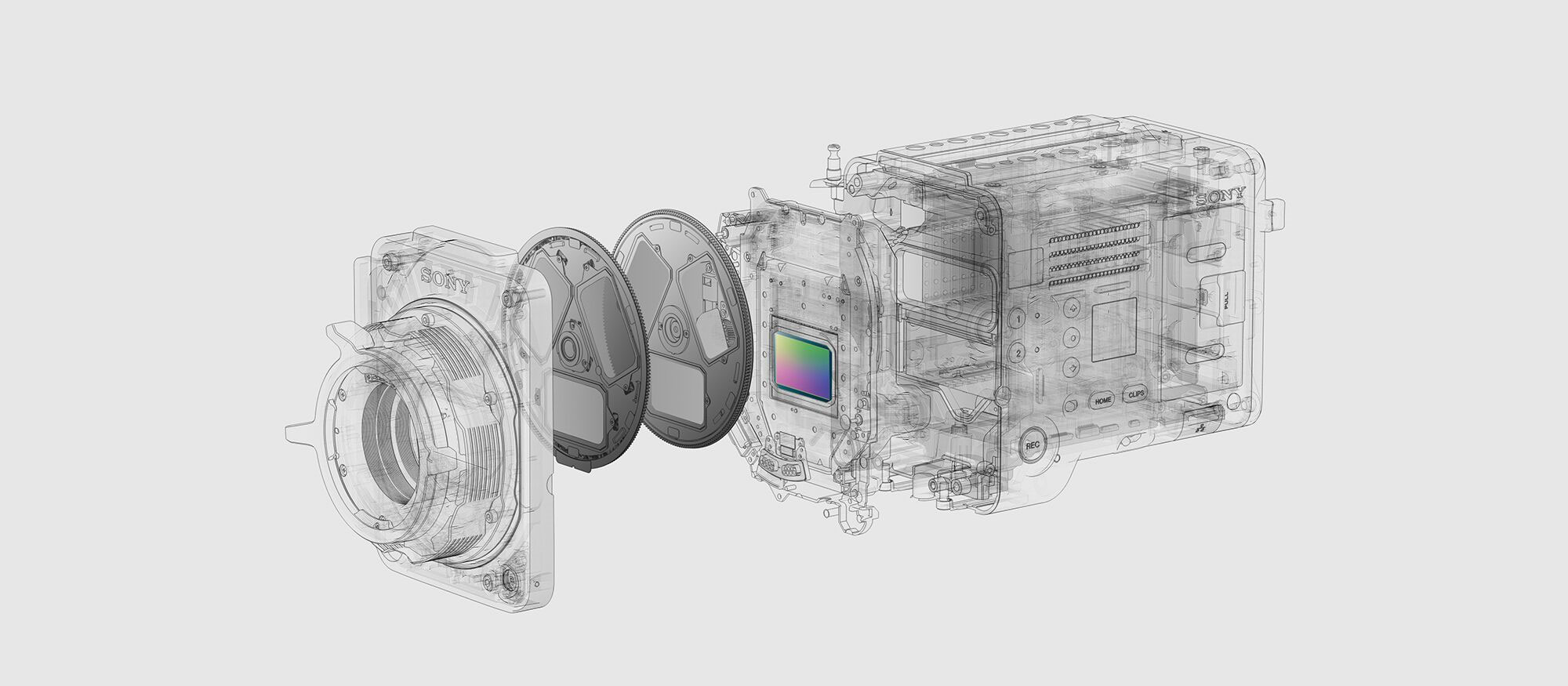Key Features Including 25p, Apple ProRes Support, Won't Be Available Until August Firmware Update
Sony said it will add dual base ISO to its new flagship Venice Cinema Camera, allowing operation at either ISO 500 for standard work or ISO 2500 for low-light shooting.
The $42,000 camera is expected to ship to customers later this month, but dual base ISO is one among a number of key features that won’t be implemented until an August 2018 v2.0 firmware upgrade. That list also includes support for Apple ProRes recording, simultaneous recording of raw/X-OCN with ProRes, fast- and slow-motion shooting modes, and user-generated 3D LUTs.
Most 6K shooting modes are being put off until v2.0, as well, with the exception of 6K 3:2 using the entire full-frame 24x36mm sensor area and recording to X-OCN via the optional AXS-R7 recording unit. That mode was moved up to v1.0 at the “critical request” of users who wanted a full-frame shooting mode in v1.0. Sony said. (Shooting in 6K 3:2 will require the purchase of an optional weekly, monthly or time-unlimited license for full-frame shooting.)
However, in-camera playback of 6K 3:2 will be put off until v2.0, when 6K 25p, 17:9 and 1.85:1 shooting will also become available. 6K 2.39:1 won’t be available until v3.0, scheduled to hit early next year. Out of the box, it looks like the Venice will support 6K 3:2 (at 23.98p or 24p), 4K 4:3 anamorphic (at 23.98p or 24p; requires optional anamorphic license), 4K 17:9 (up to 59.94p), and 3.8K 16:9 (up to 59.94p).
Coinciding with last week’s BSC Expo in London, Sony recently updated the complete Venice firmware roadmap at its U.K. website.
Typically, a camera with dual base ISOs (or dual native ISOs, as Panasonic calls the feature as implemented on its VariCams and AU-EVA1) has the ability to switch between two analog circuits controlling the output from each photosite on the sensor. Increasing the ISO above the lower base number amplifies the output but also increases noise in the image. But when the ISO reaches the higher base ISO, the circuit is switched so the photosites output higher levels without applying the additional gain.
The practical promise to users is that both ISOs will have similar noise characteristics, meaning the camera can shoot in low light at a given high ISO without taking a hit to image quality compared to working at the standard lower ISO.
Another marquee feature of the Venice camera is its built-in eight-step ND filter, which allows settings from 0.3 to 2.4 to be dialed in while working. Sony hopes that, combined with the option of working at ISO 2500, that should give shooters a lot of options to get exactly the right exposure without putting extra filtration in front of the glass.
In advance of physical camera shipments, Sony has also released the Venice Camera Simulator, which is a good way for prospective users to get their heads around what it’s like to get the camera set up for a shot. For more details on the camera’s capabilities, see our coverage from the September announcement.

